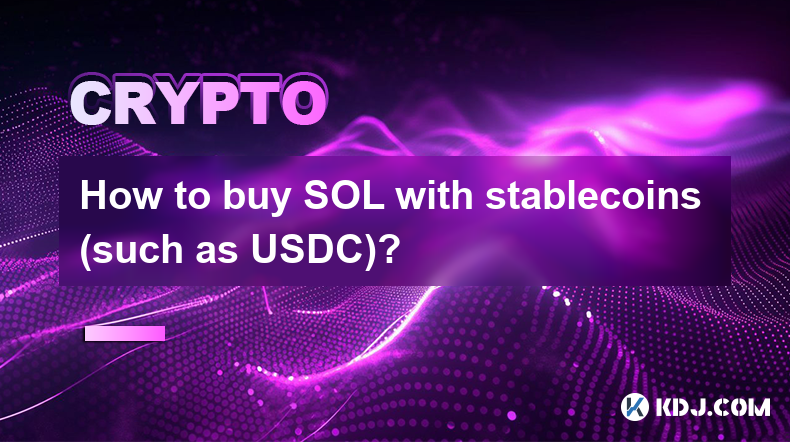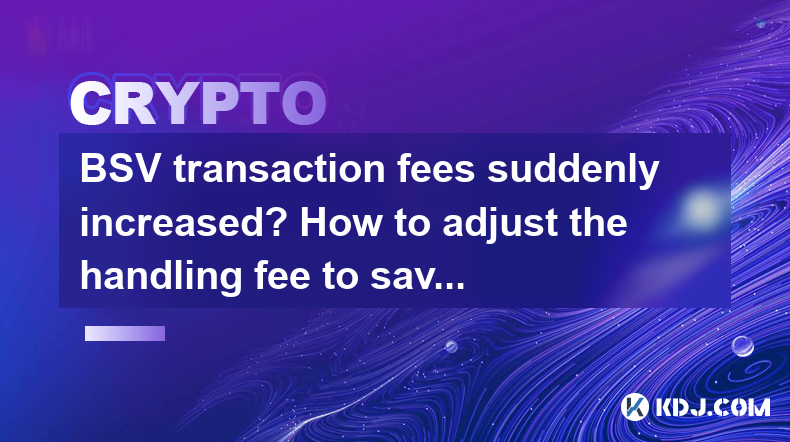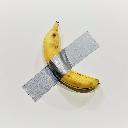-
 Bitcoin
Bitcoin $96,789.1858
2.52% -
 Ethereum
Ethereum $1,833.2358
1.68% -
 Tether USDt
Tether USDt $1.0000
-0.01% -
 XRP
XRP $2.1378
1.85% -
 BNB
BNB $605.4871
1.06% -
 Solana
Solana $146.6182
0.78% -
 USDC
USDC $1.0002
0.00% -
 Dogecoin
Dogecoin $0.1730
2.13% -
 Cardano
Cardano $0.6815
2.82% -
 TRON
TRON $0.2444
-0.61% -
 Sui
Sui $3.4002
0.79% -
 Chainlink
Chainlink $13.8976
2.72% -
 Avalanche
Avalanche $19.8692
0.60% -
 Stellar
Stellar $0.2607
1.17% -
 UNUS SED LEO
UNUS SED LEO $8.7316
0.69% -
 Shiba Inu
Shiba Inu $0.0...01283
1.41% -
 Toncoin
Toncoin $3.0122
0.14% -
 Hedera
Hedera $0.1772
1.80% -
 Bitcoin Cash
Bitcoin Cash $372.8971
3.45% -
 Hyperliquid
Hyperliquid $21.1727
4.94% -
 Litecoin
Litecoin $92.2931
12.20% -
 Polkadot
Polkadot $3.9738
1.99% -
 Dai
Dai $1.0001
0.00% -
 Monero
Monero $288.3772
1.20% -
 Bitget Token
Bitget Token $4.3184
0.52% -
 Ethena USDe
Ethena USDe $1.0003
-0.01% -
 Pi
Pi $0.5813
-1.20% -
 Pepe
Pepe $0.0...08137
2.01% -
 Bittensor
Bittensor $368.5967
-0.62% -
 Uniswap
Uniswap $4.9346
0.05%
How to buy SOL with stablecoins (such as USDC)?
To buy SOL with USDC, choose an exchange like Binance or Coinbase, deposit USDC, trade for SOL, and withdraw to a personal wallet for security.
Apr 20, 2025 at 11:21 pm

Introduction to Buying SOL with Stablecoins
Buying SOL (Solana) with stablecoins like USDC is a straightforward process that can be done on various cryptocurrency exchanges. This method is popular among traders because stablecoins maintain a stable value, typically pegged to a fiat currency like the US dollar, making them a reliable medium for transactions. In this guide, we will walk you through the steps to buy SOL using USDC, ensuring you understand each part of the process.
Choosing the Right Exchange
Before you can buy SOL with USDC, you need to select a suitable exchange that supports both cryptocurrencies. Some popular exchanges that support trading pairs like SOL/USDC include Binance, Coinbase, and FTX. When choosing an exchange, consider factors such as fees, user interface, security features, and the availability of the SOL/USDC trading pair.
- Visit the exchange's website and create an account if you haven't already.
- Complete the necessary KYC (Know Your Customer) verification to comply with regulatory requirements.
- Secure your account with two-factor authentication (2FA) for added security.
Depositing USDC into Your Exchange Account
Once you have chosen and set up your exchange account, the next step is to deposit USDC into your account. Here’s how you can do it:
- Navigate to the deposit section of the exchange.
- Select USDC from the list of available cryptocurrencies.
- You will be provided with a USDC deposit address. Copy this address carefully.
- Use your existing USDC wallet or another exchange to send USDC to this address. Ensure you enter the correct address to avoid losing your funds.
- Wait for the transaction to be confirmed on the blockchain. This may take a few minutes to an hour, depending on the network congestion.
Trading USDC for SOL
With USDC in your exchange account, you can now trade it for SOL. Follow these steps:
- Go to the trading section of the exchange.
- Select the SOL/USDC trading pair.
- Enter the amount of USDC you wish to trade for SOL.
- Review the order details, including the current market price and the amount of SOL you will receive.
- Place the order. You can choose between a market order, which executes immediately at the current market price, or a limit order, which executes only if the price reaches your specified level.
- Once the order is filled, the SOL will be credited to your exchange wallet.
Withdrawing SOL to a Personal Wallet
After purchasing SOL, it's often recommended to transfer it to a personal wallet for added security. Here’s how to do that:
- Navigate to the withdrawal section of the exchange.
- Select SOL from the list of available cryptocurrencies.
- You will be provided with a withdrawal address field. Enter the address of your personal SOL wallet carefully.
- Enter the amount of SOL you wish to withdraw.
- Review the withdrawal details, including any fees associated with the transaction.
- Confirm the withdrawal. The SOL will be sent to your personal wallet, and the transaction will be processed on the blockchain.
Monitoring Your Transaction and Fees
It’s important to keep an eye on your transactions and understand the fees involved. Transaction fees can vary depending on the exchange and the blockchain network's congestion. Most exchanges provide a fee calculator or display fees at the time of transaction.
- Monitor the transaction status on the exchange and on a blockchain explorer to ensure it is processed successfully.
- Keep track of any fees deducted from your USDC or SOL during the deposit, trade, and withdrawal processes.
Frequently Asked Questions
Q: Can I use other stablecoins besides USDC to buy SOL?
A: Yes, many exchanges support other stablecoins like USDT (Tether) and DAI for trading SOL. The process is similar to using USDC, but you need to ensure the exchange supports the specific stablecoin you wish to use.
Q: Are there any risks involved in trading stablecoins for SOL?
A: Yes, like any cryptocurrency transaction, there are risks such as price volatility, exchange hacks, and transaction errors. Always use reputable exchanges and secure your personal wallets with strong passwords and 2FA.
Q: How long does it take to buy SOL with USDC?
A: The time can vary depending on the speed of the blockchain and the exchange's processing times. Generally, depositing USDC and trading it for SOL can be done within minutes, but withdrawing SOL to a personal wallet might take longer due to blockchain confirmation times.
Q: Can I automate the process of buying SOL with USDC?
A: Some exchanges offer API access and trading bots that can automate the process of trading stablecoins for other cryptocurrencies like SOL. However, using such tools requires a good understanding of trading and programming.
Disclaimer:info@kdj.com
The information provided is not trading advice. kdj.com does not assume any responsibility for any investments made based on the information provided in this article. Cryptocurrencies are highly volatile and it is highly recommended that you invest with caution after thorough research!
If you believe that the content used on this website infringes your copyright, please contact us immediately (info@kdj.com) and we will delete it promptly.
- BlockDAG Rolls Out Instant USDT Rewards
- 2025-05-07 16:05:13
- Pre-market movers: Fartcoin (FARTCOIN) jumps 195%, Virtual Protocol (VIRTUAL) soars despite Trump's Liberation Day bearishness
- 2025-05-07 16:05:13
- The Financial World Is Once Again Fixated on Blockchain, as Institutional Interest from Asset Managers
- 2025-05-07 16:00:29
- Worldcoin Faces Legal Challenges in Kenya and Indonesia, WLD Token Drops 9%
- 2025-05-07 16:00:29
- Space and Time (SXT), an Innovative Web3 Data Platform, Will Soon Be Listed on Binance Launchpool as the 69th Project
- 2025-05-07 15:55:13
- In 2025, crypto airdrops continue to be one of the most accessible ways for early adopters to earn free tokens
- 2025-05-07 15:55:13
Related knowledge

How to calculate KAIA investment return rate? How to calculate the break-even point?
May 07,2025 at 03:21pm
Calculating the investment return rate and break-even point for KAIA, a cryptocurrency, involves understanding several key financial concepts and applying them specifically to the context of cryptocurrency investments. This article will guide you through the process of calculating both the return rate and the break-even point for your KAIA investments. ...

What should I do if I encounter slippage when buying and selling KAIA? How to reduce slippage losses?
May 07,2025 at 02:56pm
When trading cryptocurrencies like KAIA, slippage can be a common issue that affects your transactions. Slippage occurs when the price at which your order is executed differs from the price you expected when you placed the order. This can happen due to high volatility, low liquidity, or delays in order execution. Understanding how to manage and reduce s...

How to operate KAIA cross-chain transfers? What are the fees and speeds?
May 07,2025 at 03:00pm
Introduction to KAIA Cross-Chain TransfersKAIA is a cryptocurrency that facilitates cross-chain transfers, enabling users to move their assets between different blockchain networks seamlessly. This capability is crucial for enhancing the interoperability and utility of cryptocurrencies. In this article, we will delve into the specifics of how to operate...

How to trade KAIA contracts? What is the difference between delivery and perpetual contracts?
May 07,2025 at 01:50pm
Trading KAIA contracts can be an exciting way to engage with the cryptocurrency market, offering opportunities for both short-term gains and long-term strategies. Before delving into the specifics of trading KAIA contracts, it's important to understand the two main types of contracts available: delivery and perpetual contracts. Each type has its unique ...

How to trade KAIA with leverage? What should I pay attention to in risk control?
May 07,2025 at 02:07pm
Introduction to Trading KAIA with LeverageTrading KAIA with leverage can significantly amplify your potential returns, but it also increases the risk of substantial losses. KAIA, a cryptocurrency, can be traded on various platforms that offer leverage. Leverage allows traders to borrow capital to increase their trading position beyond what would be poss...

BSV transaction fees suddenly increased? How to adjust the handling fee to save costs?
May 02,2025 at 06:42am
Understanding BSV Transaction FeesBSV (Bitcoin SV) aims to fulfill the original vision of Bitcoin as a peer-to-peer electronic cash system. One of the key elements in this system is the transaction fee, which compensates miners for including transactions in the blockchain. Recently, users have noticed a sudden increase in BSV transaction fees, which can...

How to calculate KAIA investment return rate? How to calculate the break-even point?
May 07,2025 at 03:21pm
Calculating the investment return rate and break-even point for KAIA, a cryptocurrency, involves understanding several key financial concepts and applying them specifically to the context of cryptocurrency investments. This article will guide you through the process of calculating both the return rate and the break-even point for your KAIA investments. ...

What should I do if I encounter slippage when buying and selling KAIA? How to reduce slippage losses?
May 07,2025 at 02:56pm
When trading cryptocurrencies like KAIA, slippage can be a common issue that affects your transactions. Slippage occurs when the price at which your order is executed differs from the price you expected when you placed the order. This can happen due to high volatility, low liquidity, or delays in order execution. Understanding how to manage and reduce s...

How to operate KAIA cross-chain transfers? What are the fees and speeds?
May 07,2025 at 03:00pm
Introduction to KAIA Cross-Chain TransfersKAIA is a cryptocurrency that facilitates cross-chain transfers, enabling users to move their assets between different blockchain networks seamlessly. This capability is crucial for enhancing the interoperability and utility of cryptocurrencies. In this article, we will delve into the specifics of how to operate...

How to trade KAIA contracts? What is the difference between delivery and perpetual contracts?
May 07,2025 at 01:50pm
Trading KAIA contracts can be an exciting way to engage with the cryptocurrency market, offering opportunities for both short-term gains and long-term strategies. Before delving into the specifics of trading KAIA contracts, it's important to understand the two main types of contracts available: delivery and perpetual contracts. Each type has its unique ...

How to trade KAIA with leverage? What should I pay attention to in risk control?
May 07,2025 at 02:07pm
Introduction to Trading KAIA with LeverageTrading KAIA with leverage can significantly amplify your potential returns, but it also increases the risk of substantial losses. KAIA, a cryptocurrency, can be traded on various platforms that offer leverage. Leverage allows traders to borrow capital to increase their trading position beyond what would be poss...

BSV transaction fees suddenly increased? How to adjust the handling fee to save costs?
May 02,2025 at 06:42am
Understanding BSV Transaction FeesBSV (Bitcoin SV) aims to fulfill the original vision of Bitcoin as a peer-to-peer electronic cash system. One of the key elements in this system is the transaction fee, which compensates miners for including transactions in the blockchain. Recently, users have noticed a sudden increase in BSV transaction fees, which can...
See all articles



















































































